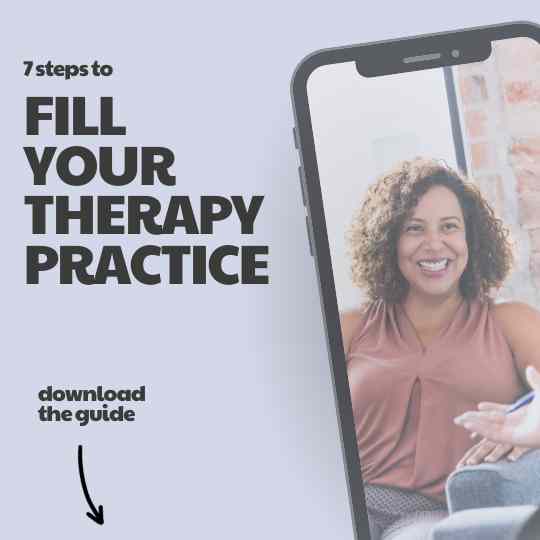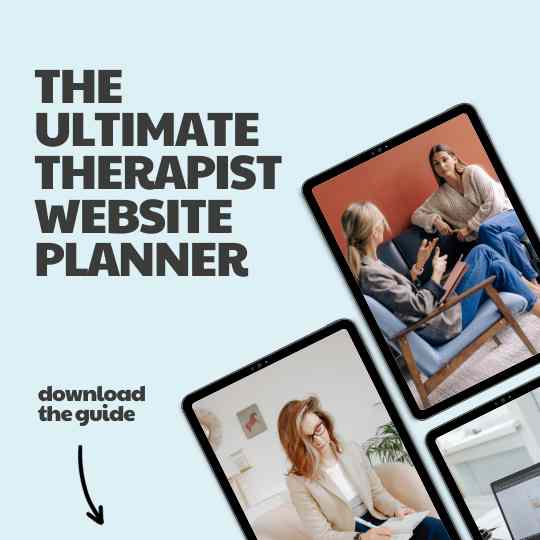Conversion Rate Optimization (CRO) is the process of increasing the percentage of visitors to your website who take a desired action, such as making a purchase or signing up for a newsletter. This process is crucial for businesses looking to maximize their online presence and convert traffic into tangible results.
In web design, CRO involves making strategic changes to your site’s layout, content, and user experience to improve its effectiveness. By integrating principles of SEO with CRO, you can enhance both the visibility and functionality of your site, ensuring it not only attracts visitors but also keeps them engaged and ready to convert.
Effective optimization requires a combination of design best practices, thorough data analysis, and continuous testing. This ensures that every element of your website contributes to a seamless and intuitive user journey, ultimately boosting your conversion rates.
Understanding Conversion Rate Optimization (CRO)
Conversion Rate Optimization (CRO) is critical for increasing the percentage of visitors who complete desired actions on your website. This section focuses on why CRO is important for businesses and the key principles to improve conversions.
The Importance of CRO in Business
CRO plays a crucial role in helping businesses maximize the return on investment (ROI) from their website traffic. By improving the conversion rate, you can turn more visitors into customers without increasing the overall traffic to your site. This is more cost-effective than spending on additional advertising and marketing efforts.
For instance, if your website has a 2% conversion rate, and you manage to increase it to 4%, you are effectively doubling your sales without additional traffic. This direct impact on revenue makes CRO a valuable strategy. Companies that focus on CRO often see improved user satisfaction because their websites become more user-friendly and efficient.
Key Principles of Conversion Rate Optimization
To effectively boost your website’s conversion rate, follow these key principles. First, analyze your current performance. Use data analytics tools to understand how visitors interact with your site and where they drop off.
Next, identify bottlenecks and pain points. Determine at which stages visitors are leaving the site and why. This might involve A/B testing different versions of a webpage to see which one performs better.
Then, optimize your website’s design and content. Ensure that your site is easy to navigate, with clear calls-to-action (CTAs). Tailoring your message to your target audience, as suggested by Forbes on CRO, can significantly improve engagement.
Lastly, continuously test and improve. CRO is not a one-time task; it’s an ongoing process. Regularly review your data and make adjustments to keep improving your conversion rate.
By focusing on these principles, you can create a more effective website that converts visitors into customers more efficiently.
The Role of Web Design in CRO
In Conversion Rate Optimization (CRO), web design plays a critical role in converting visitors into customers. Effective design focuses on your target audience, enhances landing page elements, and ensures responsive performance across various devices.
Designing for Your Target Audience
To achieve high conversion rates, your web design must align with the preferences and expectations of your target audience. Understanding your audience’s needs and preferences allows you to tailor design elements specifically for them.
Use colors, typography, and images that resonate with your audience.
Tips for design alignment:
- Audience Research: Conduct surveys and use analytics tools to gather data about visitor behavior.
- Personalization: Implement personalized content and product recommendations.
- Consistent Branding: Ensure your design reflects your brand’s voice and values consistently.
By focusing on these aspects, you create a user experience that feels intuitive and engaging, increasing the likelihood of conversions.
Elements of an Effective Landing Page
Landing pages are crucial to CRO, as they often determine whether a visitor will convert. These pages must be visually appealing and functionally efficient.
Key elements include:
- Clear Headline: Immediately communicate your value proposition.
- Engaging Visuals: Use high-quality images or videos related to your product or service.
- Call-to-Action (CTA): Make your CTA buttons stand out with contrasting colors and compelling text.
- Simplified Forms: Keep forms short and straightforward to reduce friction.
Example Layout:
| Element | Description |
|---|---|
| Headline | Clear and concise |
| Image/Video | High-quality, relevant visuals |
| CTA Button | Prominent and actionable |
| Form | Short, requiring minimal info |
With these optimized elements, your landing pages can significantly enhance user engagement and conversion rates.
Responsive Design for Various Devices
In today’s digital landscape, ensuring your website is responsive across all devices is essential. Mobile and tablet users form a significant portion of web traffic.
Responsive design essentials:
- Flexible Layouts: Use CSS media queries to adjust layouts for different screen sizes.
- Fast Loading Times: Optimize images and minimize code to ensure quick load times on mobile devices.
- Touch-Friendly Elements: Ensure buttons and links are easy to tap on smaller screens.
Benefits:
- Improved User Experience: Users can navigate your site easily on any device.
- Higher Mobile Conversions: Responsive sites have higher conversion rates on mobile.
By implementing responsive design, your site will provide a seamless experience, regardless of the device, thus improving overall conversion rates.
Conversion Rate Optimization for Mental Health Professionals
Conversion Rate Optimization (CRO) can significantly enhance a psychotherapist’s ability to attract and retain clients by making your therapist website design more user-friendly and compelling. Here’s how mental health professionals can leverage CRO to boost their practice:
Tailoring Content to Your Ideal Client
Understanding your ideal client is the first step in optimizing your website. Create content that resonates with their specific needs and concerns. This could include:
- Blog Posts: Write about topics that matter to your clients, such as managing anxiety, coping with stress, or improving relationships.
- Client Testimonials: Showcase success stories that highlight the positive impact of your services.
- Clear Service Descriptions: Ensure your services are described in a clear, compassionate manner, making it easy for potential clients to understand what you offer.
Simplifying the Appointment Booking Process
A complicated booking process can deter potential clients. Streamline this with:
- Online Scheduling: Use an intuitive online scheduling tool for therapists that allows clients to book appointments with ease.
- Call-to-Action (CTA) Buttons: Place prominent, easy-to-find CTAs on your homepage and throughout your site, encouraging visitors to schedule a consultation or contact you.
- Minimized Form Fields: Ask only for essential information during the initial booking to reduce friction and make the process quick and straightforward.
Enhancing User Experience
A website that is easy to navigate keeps potential clients engaged. Consider the following:
- Mobile Optimization: Ensure your site looks and functions well on all devices, as many clients will visit from their phones.
- Fast Load Times: Optimize images and reduce unnecessary scripts to ensure your site loads quickly, keeping visitors from bouncing.
- Clear Navigation: Use a clean, intuitive menu structure so visitors can easily find information about your services, your background, and how to get in touch.
Building Trust and Credibility
Trust is vital in mental health services. Boost your credibility with:
- Professional Design: A well-designed website conveys professionalism and care. Use a calming color palette and professional imagery.
- Certifications and Affiliations: Display your credentials and affiliations with professional organizations prominently.
- Educational Content: Provide valuable resources, such as downloadable guides or informative videos, to help visitors feel supported and understood even before they book an appointment.
Measuring and Improving Your Conversion Rate
Finally, continuously monitor your website’s performance to identify areas for improvement:
- Analytics Tools: Use tools like Google Analytics to track visitor behavior and identify where potential clients drop off.
- A/B Testing: Experiment with different headlines, images, and CTAs to see what resonates best with your audience.
- Feedback Mechanisms: Implement feedback forms to gather insights directly from your visitors about their experience on your site.
By focusing on these strategies, mental health professionals can enhance their website’s ability to convert visitors into clients, ultimately helping more individuals receive the care they need.
Optimizing for SEO and CRO Synergy
To maximize your website’s effectiveness, you need to align your SEO practices with conversion goals and drive quality traffic through deliberate SEO strategies. This ensures that you not only attract visitors but also turn them into customers.
Aligning SEO Practices with Conversion Goals
When optimizing for both SEO and CRO, it’s crucial to align your SEO strategies to support your conversion goals. Start by targeting keywords that not only drive traffic but also have high intent, meaning people searching for these terms are more likely to convert.
Create content that answers common questions and solves problems for your audience. This enhances the user experience and motivates them to take action. Ensure your page design is intuitive, with clear call-to-action buttons that lead users towards conversions.
Pay attention to your site structure. A clean and logical site structure improves Google rankings and helps users navigate effortlessly. This includes using proper header tags, internal linking, and breadcrumbs.
Using SEO to Drive Quality Traffic
Driving quality traffic through SEO requires a focus on relevant keywords and high-quality content. Choose keywords that match your target audience’s search intent, and create content that meets these needs.
Content should be informative and engaging, encouraging visitors to spend more time on your site and explore further. This increases the likelihood of conversions.
Consider implementing a site search feature, as studies show it improves user engagement and conversion rates. Optimize your meta tags and descriptions to represent your content accurately, attracting users who are more likely to convert.
Regularly analyze traffic data to understand which sources bring the most valuable visitors. Adjust your SEO strategies based on this data to continuously drive high-quality traffic that is more likely to convert.
Measuring and Testing for Improved Conversions
To optimize your website’s conversion rate, you need to use data-driven strategies and effective testing methods like A/B testing and multivariate testing. These tactics help ensure your changes lead to better user engagement and higher conversions.
Implementing Data-Driven CRO Strategies
Using analytics tools like Google Analytics 4 (GA4) and others helps you gather important data. These tools can show you where visitors click, how long they stay, and where they drop off.
GA4 offers detailed reports on user behavior, while tools like Hotjar provide heatmaps and session recordings. These insights are crucial for identifying areas of your website that need improvement.
With this data, you can create targeted strategies to address specific issues. For example, if users drop off at a particular stage in your funnel, you can test changes to that section of your site.
Best Practices in A/B Testing and Multivariate Testing
A/B testing involves comparing two versions of a webpage to see which one performs better. It’s an effective way to test one variable at a time, such as a headline or a call-to-action button. Tools like VWO and Optimizely make A/B testing straightforward and guide you through setting up and analyzing tests.
Multivariate testing is more complex, allowing you to test multiple variations simultaneously. This method helps you understand how different elements interact with each other.
Before you start, it’s important to define clear hypotheses. What change are you testing, and what do you expect to happen? Run tests for a sufficient period to gather statistically significant results.
By following these best practices, you can make informed decisions that lead to better conversion rates. You’ll know which changes are effective, ensuring ongoing improvements to your website’s performance.
Advanced Techniques and Tools for CRO
To optimize your conversion rate effectively, you should employ advanced techniques and utilize specialized tools. Two crucial approaches include leveraging technology for insights and integrating user feedback for continuous improvement.
Leveraging Technology for Better Insights
Using advanced tools like heatmaps and user behavior analytics can provide deep insights into how visitors interact with your website. Heatmaps reveal the areas of a page that get the most clicks, allowing you to focus on optimizing high-traffic sections.
User testing tools help simulate real-world scenarios, showing how actual users navigate your site and where they face hurdles. These insights can inform decisions about layout changes or content adjustments to improve the customer journey.
Customer journey analysis tools track the entire path a visitor takes on your site, from the landing page to the final conversion point. This helps identify drop-off points and opportunities for improvement, making your CRO efforts more focused and effective.
Evaluating ROI for each change is crucial. Tools that offer A/B testing capabilities can measure how different variations impact conversion rates, ensuring you allocate resources to the most effective strategies.
Integrating User Feedback for Continuous Improvement
Gathering user feedback is essential for understanding the needs and preferences of your visitors. Tools like surveys and feedback forms can collect valuable insights directly from your users. This real-time data can highlight issues that automated tools might miss.
Incorporating user testing sessions allows you to observe how real users interact with your site. These sessions can reveal pain points in the user experience that need immediate attention.
Scalability of feedback tools is another consideration. As your website grows, you’ll need tools that can handle an increasing volume of user data. This ensures you can continuously improve and adapt your CRO strategies to meet the evolving needs of your audience.
By combining technology and user feedback, you can create a dynamic, data-driven approach to conversion rate optimization, leading to sustained improvements in your website’s performance.
Conclusion
Improving your website’s conversion rate can significantly boost your bottom line. By focusing on key metrics such as user engagement and conversion rates, you can see notable increased revenue.
Use techniques like A/B testing, clear call-to-actions, and user-friendly designs to enhance conversion optimization.
Effective digital marketing strategies, including targeted campaigns and personalized content, also help achieve better results.
Remember, conversion rate optimization is a continuous process. Regular updates and testing are essential to maintain and improve performance.
Scalability is crucial. As your business grows, your strategies need to adapt to ensure sustained success. By focusing on these key areas, you’ll not only improve conversions but also drive long-term growth.
Frequently Asked Questions
This section addresses common questions about how conversion rate optimization (CRO) intersects with web design and SEO.
How can SEO increase the conversion rate of a website?
SEO can drive targeted traffic to your site. When users find your site through specific search queries, they are more likely to perform the desired actions. Optimized content and improved site speed also contribute to higher conversions.
What are some effective conversion rate optimization strategies?
Some effective strategies include A/B testing, using clear and compelling calls to action, and optimizing page load speeds. Additionally, incorporating site search can help users find products or information quickly, leading to higher conversions.
Why is conversion rate optimization crucial for online success?
CRO helps you maximize the value of the traffic your site already receives. By improving the percentage of visitors who convert, you increase revenue without needing to boost traffic, making your marketing efforts more efficient and cost-effective.
What tools are commonly used for conversion rate optimization?
Popular tools for CRO include Google Analytics for tracking user behavior, Hotjar for heatmaps and session recordings, and Optimizely for A/B testing. These tools provide valuable insights to refine your strategies.
How is conversion rate calculated in the context of SEO?
The conversion rate is calculated by dividing the number of conversions by the number of visitors to your site, then multiplying by 100 to get a percentage. For instance, if you have 50 conversions out of 1,000 visitors, your conversion rate is 5%.
What constitutes a good conversion rate in the realm of web design?
A good conversion rate can vary by industry, but generally, a rate between 2% and 5% is considered strong. High-performing sites may achieve rates above 10%. Factors such as user experience and targeted traffic heavily influence these rates.













